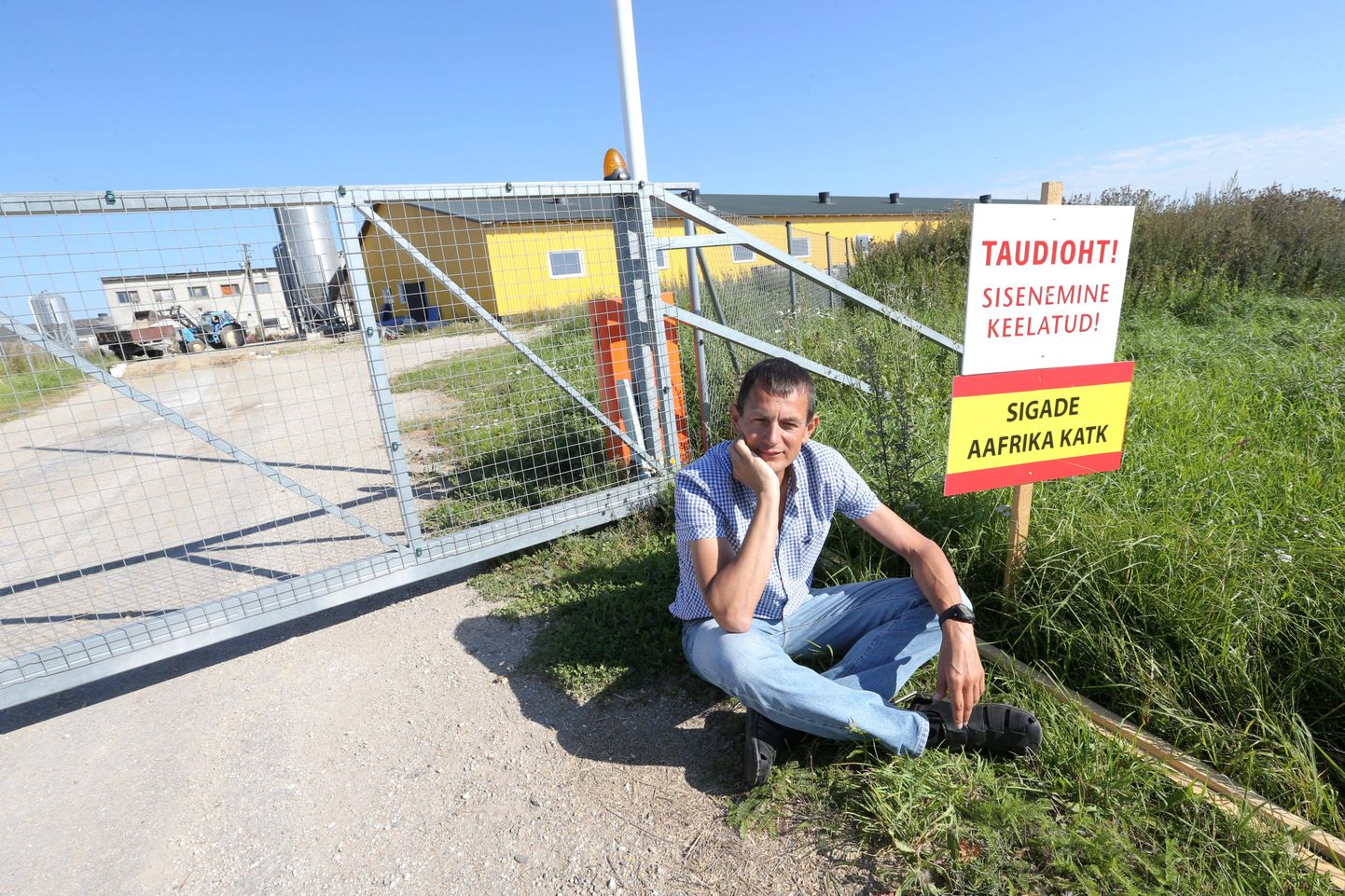
The lone birds on a wire. The grasshoppers fiddling to greet the fall. The silence is... the graveyard kind, somehow.

The lone birds on a wire. The grasshoppers fiddling to greet the fall. The silence is... the graveyard kind, somehow.
Just two weeks ago, the place was buzzing with 9,000 pigs. Today, none remains. An occasional spade hits the asphalt as working hands are cleaning up the farm. A few more weeks, and they’re done.
The farm has been hit with swine fever, and not just one but twice. First on August 7th, and in the other shed last week leading to the hogs slaughtered last Friday. «Over there,» says Kaubi OÜ chief Rain Puhk, waiving towards where gilts used to dwell.
Mr Puhk is the man regarding whom Veterinary and Food Board (VTA) director-general Ago Pärtel expressed the opinion he helped the fever into own farm. Mr Puhk retorts the statement might only be explained as an attempt to divert public spotlight – VTA’s dealings with the fever have flopped bad.
He says in reality such things can never be because a farmer will always be a farmer. «I think a farmer would rather put a bullet in his head than live knowing he infected his own animals,» says Mr Puhk. He thinks Mr Pärtel is shooting from hip as VTA was yet to get the test results as the accusation was worded.
How the fever spreads is still unclear. The outbreak in Kaubi Farm in unique in that no fever-stricken wild swine have been detected nearby. Up to now, all centres of the fever have been linked to wild swine, Mr Pärtel told BNS the day the fever was discovered at Kaubi.
Even so, till today the farm has not been inspected. «No inspections have been made, no samples taken, no-one has talked to me,» said the pig farmer, according to whom the conclusion drawn by Mr Pärtel was arbitrary.
Mr Puhk thinks that after the initial outbreak of the fever, the dead pigs should have been transported some other way and not passing the clean shed. The whole building was made H-shaped for the very reason to have the other part totally separate should something happen in one. The first time the fever hit was in the farrowing area holding 6,426 hogs. Even so, the separate area was not enough to save the swine at the other end.
«The trucks passing by and dripping blood passed this very gate,» says Mr Puhk, pointing at the gate that the two sheds share. He says the fear among pig farmers is that the animal waste handler Vireen’s trucks are distributing the infection. However, they can’t point the finger on anyone.
As early as a year ago, Kaubi OÜ adopted the stricter biosafety measures, as disinfecting mats were installed. The shower room is split into «dirty» and «clean» areas; exiting both, differing clothes need to be worn. Also, any truck entering the farm will pull to a stop on a disinfecting mat, and is checked.
Mr Puhk says that though the fever was feared to hit, such an epidemic no-one cold foresee. This might be the reason the proposal by pig farmers last year – to start thinning the wild swine ranks – went unheeded. That’s the very idea Mr Puhk also tabled, in a letter to VTA last year listing various measures to cut the wild swine population.
Yesterday, rural life minister Urmas Kruuse aired an opinion that the sick animals may have been driven into Estonia by the Latvians eagerly shooting swine.
«This is my life’s work, so to speak,» says Mr Puhk sadly as we drive off. But once the fever gives way, he’ll be raising pigs again.